1. Learn the best OLLs and PLLs
- When I initially started cubing with CFOP, there were not many who knew all OLLs in India. I realized I could be part of that small elite who knew all if I crammed algorithms somehow. And because of this, I focused on the speed at which I could learn and ignored quality. But it was later that I realized this was a mistake and had to relearn algorithms for them all again.
- Use algorithm sites like speedcubedb.com to compare different algorithms and see which works for you. The fastest ones always win, unless the execution is risky.
- Some algorithms which are the highest rated are there on top for a reason. They may be tricky to execute initially but you will get the hang of it soon. Just keep giving it a try.
2. Watch Videos of Execution (if possible, multiple)
- This is very important. The more videos the better.
- Watching others execute gives you a fair sense of how fast the world is versus how fast you can execute. If the difference is great, you need to drill them (execute them over and over again).
- There are multiple ways to execute algorithms. I would also recommend trying it your way versus the way it is shown in the videos. See which works better for YOU. Typically for something to be better in this context, it needs to be faster than the other.
3. Drill Algorithms using Trainer

- Earlier, the only way someone could recall an algorithm and execute would be while arriving at that case during a solve or by setting it up. But over time, there have been pretty generous people who have helped the speedcubing community grow by designing trainers.
- There are algorithm trainers that can help you improve faster. You simply specify which set/ subset you need among the PLLs or OLLs and the computer will share a scramble to execute. You can then start the timer, recognize the case, execute and stop the timer. Over a period of time, this will make it easier for you to identify the cases which need more work.
- Some algorithm trainers that you can use and I would recommend are speedcubedb.com/t, bestsiteever.ru, https://tao-yu.github.io/Alg-Trainer/
- Get as comfortable as you can with this trainer. You will need it more often for other subsets/ sets/ methods/ puzzles.
- If you are someone who has just started learning them, I would recommend starting your session with an average of 25 of just PLLs and just OLLs before each session. This would help warm your fingers up and your mindset. You will also observe that typically when you start your 3x3 practice after this grind, you will be much better with your Last layer because of improved recognition and execution.
- When you start working on point number 5 mentioned here, you will understand that this trainer works like a charm. Recognizing from different angles will take its own sweet time if not done using a trainer. Be wise and train like a pro!
4. Try to predict PLLs/ OLLs
- This comes with a little deliberate practice. Although this is not straightforward, it would be crucial for you to keep improving.
- OLLs can be bucketed into dot cases, 9 o clock cases (adjacent 2 edge-oriented cases), Horizontal line cases (Opposite 2 edge-oriented cases), and Plus (All edges oriented). By the time you finish your last f2l, aim to identify which of the above-mentioned case you will arrive at and immediately identify/ execute.

- Same way, PLLs can be bucketed into Edge PLLs (U perm, Z perm, H perm), Diagonal PLLs (E perm, N perm, V perm, and Y perm), and Adjacent PLLs (the rest of the PLLs).
- I cannot again emphasize the need to use an algorithm trainer more here. If you want ti to improve on this, use an OLL trainer, and as you finish your OLLs, try to predict your PLL category and reduce your transition times.
- A lot of world-class solvers have really good recognition times for OLLs/ PLLs (typically less than 0.3s). If you want to be the best, you need to train the same way the pros do!

5. Learn more Algorithms for different Angles and 2-sided Recognitions
- As you progress, you may have to identify PLLs from different angles to avoid performing U, U’ to recognize and immediately execute.
- This can come over time from excessive practice, by using algorithm trainers every day to understand and from learning 2-sided PLL recognition techniques. I would recommend watching this video from speedcubedb’s channel.
- In addition to this, for certain cases (like A perms, U perms, Gc perm, J perms, and R perms), I would recommend learning another algorithm to execute from a different angle.
- I typically have at least 2-3 algorithms in my mind for each PLL at any point in time. The more angles you can deal with them from, the lesser time in transition.
- Learning to execute from more angles also means, there will be fewer regrips and fewer awkward AUFs (Adjusting Upper Face) to execute once you finish the PLLs.
About Author

Bhargav Narasimhan
Bhargav Narasimhan is the current 3x3 One-Handed (Average) National record holder from Chennai. He started his cubing journey when he was 17. He loves music, bodybuilding, and cricket. He has participated in 78 competitions and won a total of 379 podiums with 207 Gold medals, 42 National records, 4 Asian Continental records, and 1 major championship medal.

















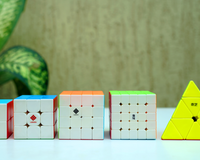
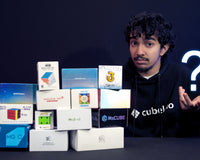
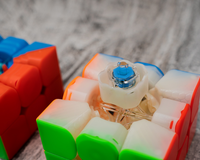
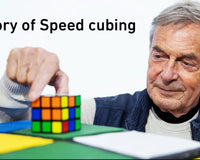
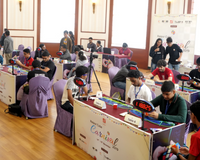









2 comments
Rudransh Bameta
I have been struggling to improve my last layer since I became sub 9.8. This is helping me a lot
Akash Mondal
Why Cube Solve